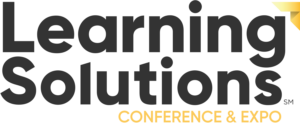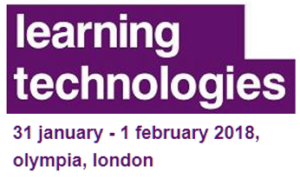NOTE: This is an update to a post that originally appeared elsewhere on 10/22/2011.
The Learning Solutions Conference is quickly approaching. The conference will undoubtedly feature a vibrant backchannel community that shares and expands on the knowledge being exchanged on site. It’s a tremendously valuable way for both conference attendees and non-attendees to enhance their conference-related learning.
The value of the backchannel is in the sharing, not in the technology. In much the same way that a person can not really appreciate the joy of riding a bicycle until they can do so without consciously focusing on balance and pedaling, getting the full value of a backchannel requires an understanding of what the backchannel is and how you use tools to participate in it. This post focuses on the the first question: What exactly IS a Backchannel?
Wikipedia defines a backchannel as:
…the practice of using networked computers to maintain a real-time online conversation alongside live spoken remarks.
That definition, while accurate, is somewhat misleading. The phrase ‘networked computers’ conveys an image of desktop PCs that are connected to one another through a network. In most cases, the computers used in a backchannel aren’t found on a desk; they’re found in your pocket. If you’ve been to a conference or training event in recent years, you’ve probably had this experience.
 You’re sitting in a conference listening to the speaker, and the person next to you appears to be more interested in their mobile phone than in what the presenter is saying. Then as you look around, you realize that there are plenty of others that are typing away at their Blackberry, iPad, or laptop – all while the speaker is presenting.
You’re sitting in a conference listening to the speaker, and the person next to you appears to be more interested in their mobile phone than in what the presenter is saying. Then as you look around, you realize that there are plenty of others that are typing away at their Blackberry, iPad, or laptop – all while the speaker is presenting.
Years ago this sort of activity would be seen as rude and disrespectful to the person speaking. It was a sign that the attendee was completely disinterested in what was being discussed, and had their attention elsewhere.
Quite often, the setting described here is actually showing the exact opposite.
In some cases it may simply be that the notes that were once taken on paper are now being taken electronically. What’s taking place in increasingly large numbers is that people are going beyond just note taking, and have begun to interact with the information being discussed in new ways.
Through social media (usually Twitter), conference attendees can share their thoughts and ideas about the information being shared with others. It could be as simple as taking the notes I might normally compile for myself and sharing them with the world at large. What’s more exciting about this sharing is it extends beyond just notes from the presentation. Conference attendees share their own thoughts and experiences about the content. They share additional resources that add to those shared by the speakers. In short, through their sharing, they expand the content and become a part of the presentation.
Even more powerful is that this sharing breaks through the walls of the session, sharing the content with anyone that is interested in reading it – even those that are not attending the session. It is this sharing and expansion of content during a live event that is referred to as ‘The Backchannel’.
To truly understand and appreciate what the backchannel is though, you really need to participate in it. The time to do that isn’t when you arrive for the first day of the conference. That would be like throwing a first-time swimmer into a stretch of river rapids. If you are interested in participating in the backchannel, the time to think and prepare for it is now, before the conference begins.
My next post will walk through what you need to do to participate in a conference backchannel, including signing up for a Twitter account and tips for monitoring and interacting with the backchannel feed.
For more tips on getting ready for Learning Solutions, check out the other posts in this series:
Preparing for the Learning Solutions Backchannel #LSCon
What Exactly IS a Backchannel?
How to Participate in the Learning Solutions (#LSCon) Conference Backchannel
Backchannel Tips: Explore the Learning Solution Program Guides #LSCon
Mapdeck: A New Way of Bringing the #LSCon Experience Back Home
Backchannel Tips: Introducing #LSCon Hashcaster







